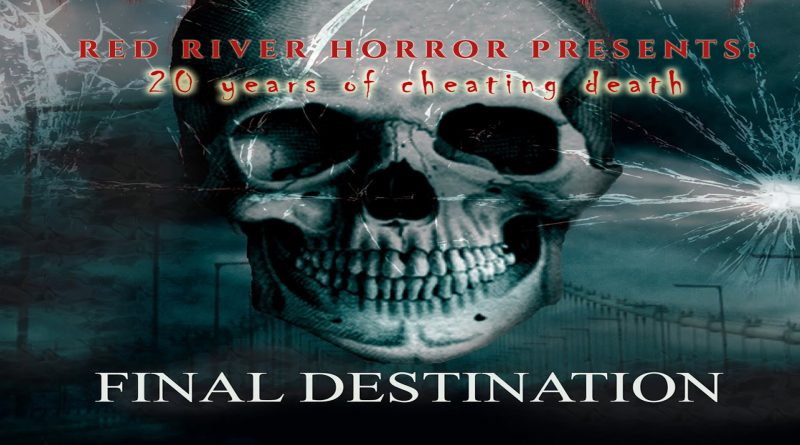Final Destination | 20 Years Later
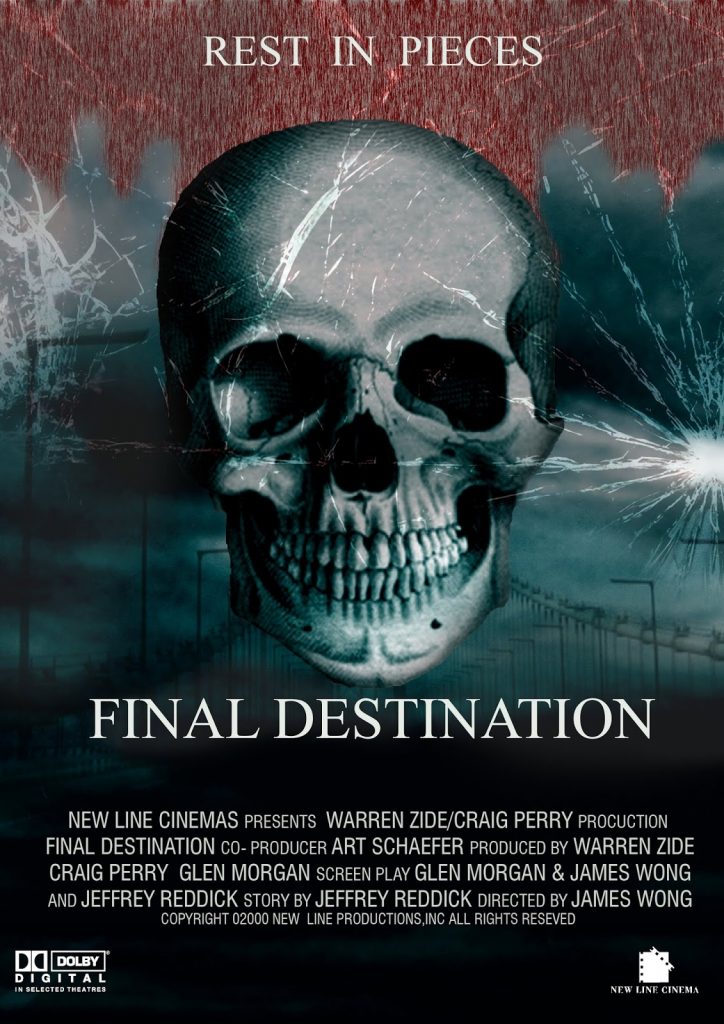
By Staci Layne Wilson
Exclusive new interviews with Jeffrey Reddick (writer), Craig Perry (producer), and Robert McLaughlin (cinematographer). Vintage interviews with Tony Todd (actor) and James Wong (writer-director).
Let’s take a trip back in time. Sprinkle some glitter, dive down the wiggly rabbit hole, drain the technicolor to scratchy black and white, and cue that trippy synth music.
Remember the year 2000?
Yes, I know it’s painful to think of life in pre-smartphone times, back when a tweet was something a bird did, a yahoo was a dumb person, and Facebook only happened if you fell asleep while reading a paperback.
If you are of, ahem, a certain age, you were probably grateful on January 1, 2000 because you survived Y2K and realized that whole Millennium Bug scare was nothing to worry about after all. You may have been obsessed with “Brennifer” (as Brad and Jen were singularly known), or maybe you were glued to the tube watching that addictive new show Big Brother. Consumers were leery of hamburgers thanks to a Mad Cow Disease outbreak, and the ILOVEYOU computer virus spread quickly throughout the world.
In the year 2000, much of the public was afraid to fly following the Air France Flight 4590 disaster. It was the first Concorde accident since the supersonic passenger plane went into commercial operation in 1976. In cinematic crashes that year, Tom Hanks nearly lost his life in Castaway (but he did almost win an Oscar).
Final Destination premiered months before Castaway and had already taken hold as nightmare fuel. Its opening sequence was seared into the psyches of timid travelers all over the world and the scars remain, two decades later.
Of course, back then we didn’t know that the seemingly innocuous popcorn flick would be an insidious phenomenon that’d haunt our pop culture dreams for years to come. In a fun way, sure. But still… Wouldn’t you think twice if you heard a John Denver song while booking air travel? Would you boldly board a flight bearing the number 180?
High school senior Alex Browning (Devon Sawa), is embarking on a class trip to Paris. Soothing John Denver music plays on the P.A., and everyone is feeling fine as they board Flight 180. But then Alex experiences a premonition—he sees the plane explode into a fatal fireball moments after leaving the ground. An alarmed Alex insists that everyone get off the plane, so seven people including Alex, are forced to disembark. All watch as the aircraft actually blows up shortly after takeoff. He and the other survivors have briefly cheated death, but will not be able to evade their fate for very long. One by one, these fugitives from fate fall victim to the grim reaper.
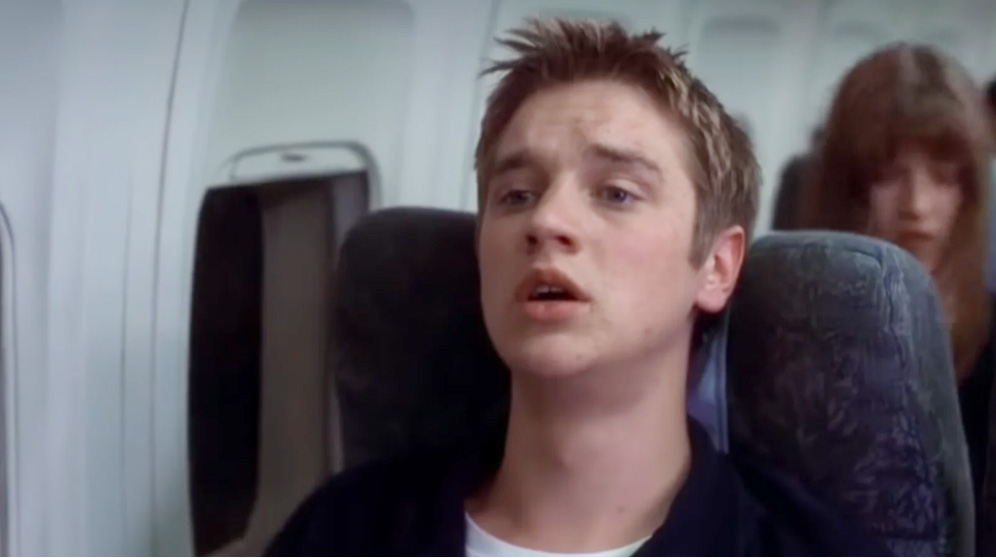
It’s not just us who’ve stayed spooked. It’s the creators behind the horror, too! When I interviewed Final Destination’s cowriter and director James Wong back in 2006, he told me: “Directly after the release of the movie, there were times when I’d really get freaked out. There have been so many times I’m walking around these cherry-pickers [hydraulic cranes often used on movie sets] and think something bad is going to happen. Particularly when you’re walking the studio, you see there’s all this stuff that you know is an accident waiting to happen. But people just walk blithely on. They just walk right underneath that thing! I take the roundabout path. I’m much more careful and cognizant of that stuff because I’ve been thinking about this for a long time, more than regular people.”
Producer Craig Perry says, “Since making the first Final Destination, I can’t even walk into a room without scanning to see what might kill me. My entire life has become a Death movie. It’s exhausting!”
It is amazing, when you think about it, how deeply embedded into the atmosphere the Final Destination effect really is. The first feature spun off several sequels (with another one in the works—more on that later), but that alone isn’t enough for something to become conversational shorthand amongst the general populace. For instance: earlier this year, I was looking at apartments to rent and when a leasing agent told me that one of the amenities was a tanning bed, I said, “Nice. But I’ve seen Final Destination 3!” She got the reference immediately. And let’s face it: no one who has seen Final Destination 2 will drive directly behind a logging truck on the highway. Ever.

But way back in the 90s, there was no Final Destination. There was just The X-Files television series and a young, aspiring screenwriter with a great idea. His name was Jeffrey Reddick. (Still is!) “What eventually became Final Destination started off when I wrote a spec X-Files episode to get an agent. I got the agent, but I was working at New Line Cinema at the time, and a colleague, Mark Kaufman, convinced me the concept was strong enough for a feature. Another coworker, Chris Bender, got my concept to Craig Perry and Warren Zide and we developed it as a treatment. While writing the treatment, and the first draft of the script, A Nightmare on Elm Street was definitely my biggest influence. In my original draft, since Death screwed up the first time, it psychologically tormented the survivors by plunging them into their fears, and grief, to drive them to suicide. Which is pretty dark.”
While the Final Destination movies are not particularly scary, the specter of Death certainly is. And the idea that one cannot get away with cheating it is one that’s been around since time immemorial. But for those of us born in modern times, The Twilight Zone is our touchstone on that plot device. For its first season, Rod Serling wrote a story called One For the Angels, in which a salesman tries to sell Death on sparing his life. In Season 3, a young Robert Redford takes on the specter of Mr. Death in an episode called Nothing in the Dark.

“People have asked be about the Twilight Zone,” says Reddick of his initial inspiration for what would become Final Destination, “but honestly, I didn’t see any of those growing up. I grew up in the hills of Eastern Kentucky, and [when I was young] our family only got the three main broadcast networks. I grew up on a steady diet of 70s and 80s series. And watching every horror film I could get my hands on. But by the time I got to college, I was just watching The Simpsons and still watching every new horror film that came out. I never got caught up on Twilight Zone until later in life.”
Reddick’s idea was sparked by reading an article in People magazine detailing a mother’s premonition that her daughter’s flight was destined to explode. It did indeed crash, sending a chill through Reddick and inspiration to his brain.
“In my first treatment, which was then titled Flight 180, the characters were all adults. But after Scream came out, we changed them to high school students. So, when I wrote the full script, they were teens. As for my feelings about the change [from adults to kids, and adding humor], I worked at New Line Cinema for eight years before selling Final Destination, so I learned to take my ego out of the process. I know everything evolves as people are brought on and if you have everyone working to make a great movie, then you can’t take it personally if things change.
“I was very fortunate to be working at the studio. New Line’s Founder, Bob Shaye, was a wonderful mentor and kept me very involved during the entire process. We first went out to Clive Barker to direct and he passed. When Bob asked me what I thought about going to James and Glen, I told him I thought it was a great idea. They’d directed some of my favorite episodes of The X-Files and I loved their aesthetic and ability to do scary and black humor. Since this was originally written as an X-Files spec, as corny as it sounds, I thought it was a great karmic thing to be in the hands of a team I admired from the series.”
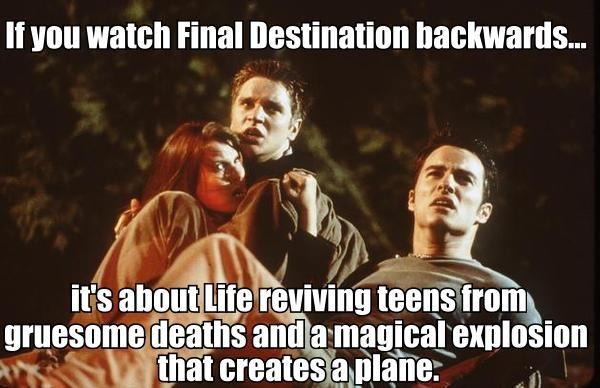
James Wong and Glen Morgan were a great team—they’ve since broken up their partnership—in that they were able to mesh some extremely disparate themes into cohesive scenarios. One example that you’ll notice time and time again is the use of an upbeat or romantic song playing over horrific visuals. They did this in Final Destination by using John Denver—a country singer who’d actually perished in the plane crash in the late 90s—as the auditory cue of Death’s nearness. While gallows humor is not as acceptable in today’s era of outrage and indignation, it was quite common 20+ years ago. Denver died just a couple of weeks before Halloween, and I remember the joke about the hottest costume being “John Denver… some assembly required.”
Reddick says, “I’m a huge John Denver fan. That motif was James and Glen as well. I’m extremely happy with all the great stuff they did to bring the project to the screen. I’m personally hesitant about stuff like that, since he really died in a plane crash. I’ve had a few fans complain that it was tacky. But again, I’ve also had some fans say they freak out when they hear the song if they’re going to the airport. So, it was effective.”

Perry agrees that the cheeky irreverence worked well for the film. “That specific tonal balance is why we approached James and Glen while Jeffrey was writing his first draft. We’d heard they were interested in moving back into features [they had done one movie before, 1985’s The Boys Next Door] and thought it would be a good fit for them, especially given the lineage of Jeffrey’s idea.”
After Morgan and Wong signed on for Final Destination, cinematographer Robert McLachlan came on board. He’d been working on a show called Millennium, which was created by X-Files showrunner, Chris Carter. McLachlan’s shooting style for Millennium was gritty horror noir, pretty much the opposite of what’s seen onscreen in Final Destination. “Influence for Millennium were the movie Se7en which had just come out, and then as it progressed, I think all the vintage B movie film noirs I watched on the border station KVOS as I was growing up must have crept in a lot. Many reviewers tended to really notice the lighting in that show because it was very moody and controlled. Part or the reason we could get away with it is that Chris at the time had so much clout he could actually force the network into sending it out the way he wanted against their engineers and execs wishes, I think. But as ahead of its time as the lighting was, I think the show’s real look came from a very locked down camera style. We used a limited palette of lenses and didn’t move the camera unless it was really motivated. I was also influenced by painters like Ivan Albright and the Caravaggio school as well as the moody Dutch narrative painters of the 1600s.”
McLachlan says he rejiggered his cinematic television style into something entirely different (a 180, perhaps?) for the big screen gig. “On Final Destination the goal was to have zero style. Glen and Jim’s thinking was that the less it looked like a horror film and the more it looked like a bland domestic drama—at least initially—the more impact the horror would have. Like not using spooky lighting and shafts of light and so forth, but making bathrooms and kitchens and airplanes look as familiar as possible. We didn’t want to put anyone on edge. We didn’t want them to see it coming. We wanted those locations to look as banal and as familiar as possible. And boy, did it work! In fact, years later when I was prepping the ‘Red Wedding’ scene for Game of Thrones I wanted to figure out how to do the same thing but even more shockingly. For the wedding banquet, I added way more light than that series ever had on a night interior. I wanted it festive and bright and optimistic feeling—as much like a Disney movie as that show would ever get. That way when we pulled the rug out the audience would go down that much harder. Same on the Final Destination movies.” (Along with Wong and Morgan, McLachlan returned to make Final Destination 3.)
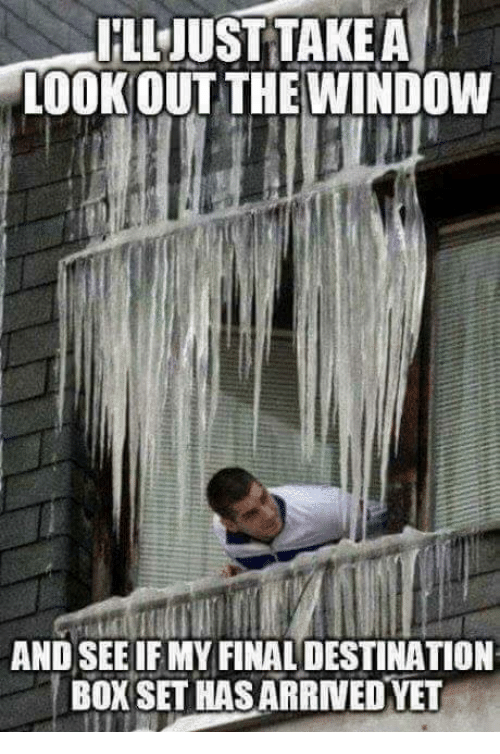
While the story went through some different iterations before being committed to film, there were few regrets from the guys behind the franchise. As Reddick said earlier, he was happy to kill his darlings. “I honestly can’t think of anything [from my original script] I wish had been kept. The concept, story, character relationships and Death’s Design—where death was killing them in the order they would have died in the crash—was all there. The most fundamental change they made was getting rid of the nightmarish set-pieces and rooting Death more in reality. I really feel that made the movie stronger and more relatable. I feel the way they set up the Rube Goldberg design and set up the fact that Death was all around us gave the movie more universal appeal. In my script the deaths were more geared to just a horror audience. I feel their take opened it up and I don’t think it would have been the hit it was without that change.”
Perry says that the movie wouldn’t have been the hit it was with the originally-conceived, sorta-kinda happy conclusion, either. “If the movie had gone out with its original ending, I’d be giving you your change at McDonald’s right now. The test audience nearly tore their seats from the floor and threw them at the screen, they hated it so much. It was clear the more contemplative, thoughtful ending was not what they wanted. I have to give a lot of credit to James and Glen. There was a lot of things they needed to juggle in order to land the ending we wound up with, and they were able to manage all of it with calm and focus.
“The next time you look at the sequence where Ali Larter [who plays Clear Rivers] is trapped in the car with the electrical wires flailing about, consider this: that short sequence is comprised of footage from three different locations, including one where we brought the hero car into an abandoned mall and built a portion of the garage around it, including trees. Some of it was to reshoot dialogue to justify the new ending, some to tweak performance, and some to add the element of threat with the torch tank blasting in under the car. It’s a prime example of how much goes into each one of these sequences. And they’re really hard to get right!”
I didn’t say no regrets, though. Wong, back in 2006, told me he wished they hadn’t included the love story between Alex and Clear. “I think we were trying to connect them, but it rang false. I think it was sort of like ‘Well, the guy and girl should get together’ kind of thing. But it wasn’t believable.”
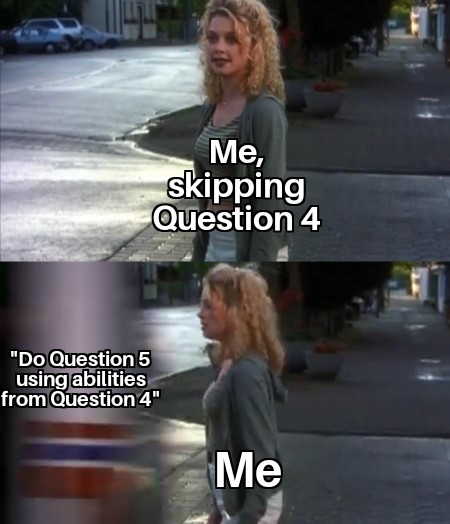
Another unbelievable, but totally fun, element to Final Destination is in the naming of its characters. Alex Browning, Billy Hitchcock, Larry Murnau, and Black Dreyer are named after directors Tod Browning, Alfred Hitchcock, F.W. Murnau, and Carl Theodor Dryer respectively, while the characters Terry Chaney, Agent Schreck, and Valerie Lewton all pay homage to the actors Lon Chaney, and Max Schreck, Val Lewton. “That was James Wong and Glen Morgan’s idea. I think it’s a really cool homage to the great horror directors of the past…and added a layer of fun to the film,” says Reddick.
“I’m a fan of almost all kinds of movies,” Wong said. “I love some of the Val Lewton stuff where you don’t see the monster. When I was in film school, I never thought I’d be doing horror movies. But then I never thought I was going to write sci-fi either, although I read a lot of sci-fi when I was a kid. The movies I’ve made so far have been pretty explicitly out there. But I think that’s more a sign of the times than what I personally prefer. I like the more suggested horror than real explicit stuff. I think it’s sort of where we are today, in that it’s harder to get the audience to react.”
One of the cleverest elements of Final Destination is that you never actually see Death personified. Actor Tony Todd, who’d already made a name for himself in horror villainy with Candyman, is the next best thing. He plays Bludworth, a mysterious figure who may or may not run a funeral parlor. In an interview from a few years back, Todd told me, “I don’t see Bludworth as a bad guy. A lot of people ask me, ‘Is he the Grim Reaper?’ No. ‘Is he the Messenger of Death?’ No. He does have a secret. But he’s sincere in that he’s trying to warn these people about their fates.”
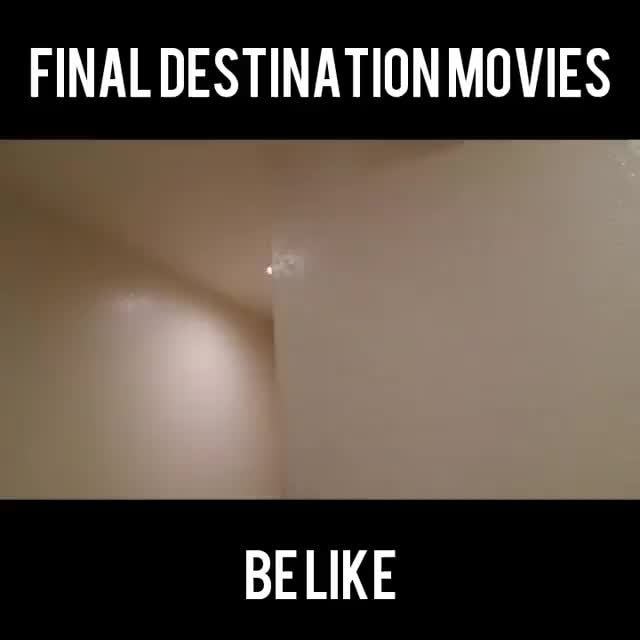
When I asked Perry about this recently, he just smiled and said, “Ah, the eternal question. Look, Tony has his process and I respect it without question. Ultimately, I think it’s more fun not providing an answer either way. The debate itself is far more interesting! What the character of Bludworth does provide, however, is a means to introduce challenging information into the story. Given the occupations we’ve given that character over the years and the natural gravitas Tony has, we’re able to posit some truly far-out notions that we’d never be able to credibly get to otherwise. I don’t think it would work coming from any other actor.”
Perhaps the most enduring and talked-about element of the franchise, which was strong right out the gate in 2000 with the first one, is its Rube Goldberg style death set-pieces. (A Rube Goldberg machine, named after the cartoonist who invented it, is a gadget intentionally designed to perform a simple task in an indirect and overly complicated way.)
When it comes to favorites, it’s impossible to play them for the creators. But Reddick says, “I have to acknowledge Val Lewton’s death scene. Kristen Cloke is an amazing actress and that scene is the pinnacle of horror and gallows humor. I mean, Death kills the shit out her character and it’s just an amazing scene!”
Of course, the first sequence, which shows the plane crash in excruciating detail, is the attention grabber. As one can imagine, it was not easy to shoot. “The gigantic airplane gimbal was a huge undertaking,” recalls McLaughlin. “The set was a full section of a 747 about 20 feet off the floor.” And then there’s the big finish. “In terms of the most elaborate scene I feel the climax at the girl’s house was the hardest—if you watch it what with all that is going on, you’ll see a massive number of cuts to cover all the beats. It included a real jet engine to create wind, a dog, rain and a million moving parts—it was a lot of work. It’s the kind of scene that you can see perfectly in your head when you read it, but on second reading, you realize: Wow. That’s a lotta work!”
I wasn’t working as a film journalist when Final Destination was released—that career opportunity would come one year later—but I do remember the mostly positive reviews. The highly esteemed Pulitzer prize-winning critic Roger Ebert wrote in his syndicated column, “Final Destination observes the time-honored formula of the Dead Teenager Movie: It begins with a lot of living teenagers and dooms them. But the movie, made by two veterans of The X-Files TV series, is smarter and more original than most DTMs. It has mordant humor, Rube Goldberg death traps and sophomoric but earnest discussions of fate. Also, an opening sequence that assures this film will never, ever, be shown on an airplane.”
Imagine being the creator of this, and seeing your first feature film playing on a big screen. “When I saw the film for the first time, I was just grateful,” Reddick recalls. “It’s really hard to get one movie made in your life, and here I was, a guy from Eastern Kentucky, who loved A Nightmare on Elm Street… with a movie coming out, distributed by New Line Cinema, which is known as “The House That Freddy built.” I worked out of New Line in New York, so all the glitz and glamour stuff wasn’t really in my blood. It was about having a film come out that you’d developed for years [and seen through to fruition].”
It’s been nine years since the last Final Destination sequel and of course every horror fan is wondering if and when there is going to be a Part 6. Of course, the film biz has taken a hit recently, and making Final Destination movies is not cheap. Todd summed it up like this: “It’s really an expensive film to shoot. Just getting the set-pieces, like for example Part 2 with the whole traffic accident, that took a good five weeks to shoot and at least $20 million bucks. When you think about other successful horror films like the Annabelle movies, which just focuses on a doll, they can shoot cheaper and still make money.”
Craig says, “As the years went by, we pitched many, many versions but none of them got traction. Thankfully, fan interest has never waned. The memes kept coming. Finally, the age of intellectual property value caught up with us, and we were given the go-ahead to develop a new one. We hired Patrick Melton and Marcus Dunstan (of The Collector franchise) to write a draft. And while I can’t go into too many specifics, it takes place in the world of emergency first responders—EMTs, firemen, police, and so on. These people are on the front lines in the battle between life and death, and are forced to constantly make critical decisions that impact that battle. Why not put them front and center in a Final Destination movie? Let’s just say it’s opened up a lot of new ideas for the set pieces the fans want. And there are a lot of interesting thematic questions involved now as well. Hopefully, we’ll get the chance to make it!”
Reddick adds, “After the first two films, I haven’t been involved in the sequels, but I’m tight with the studio and producers, so I know what’s going on with them. I loved the last one a lot. I do have ideas on how I would like to do a sequel, with Death having a new design. But I’d want to do a true reboot and not just remake the same movie. But when you have a successful franchise, people don’t want to change a formula if it works.”
Perry and Reddick have remained friends for all these years. When I asked each of them what keeps their alliance going, they had similar responses: they are just good people.
“What is it I admire most about Jeffrey? That’s easy. Kindness,” Perry states. “Jeffrey may be the kindest person I’ve ever met. Oh, he’s talented as well. But there are a lot of talented people who are complete assholes. I’ll side with talented kindness every time. Beyond that, he has such a passion and love for storytelling in general. It’s in his DNA. And when you combine passion and kindness towards any endeavor, you’re on your way to success.”
Reddick says, “The thing I admire the most about Craig is that he’s a damn good person. He’s honest, loyal, an extremely smart producer and he works with a degree of integrity you don’t often find in this business. He treats everyone with respect and he knows what he’s doing as a producer. He’s also a true horror fan and respects the genre.”
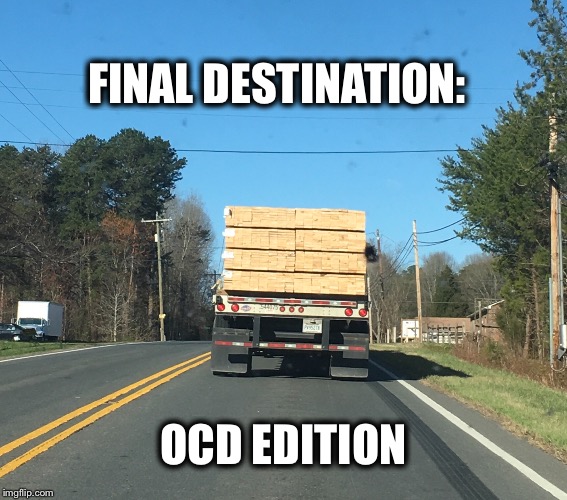
I guess it’s not easy to have a lot of perspective on something you created, but I wonder how it feels to have generated a pop culture phenomenon. Even today, youngsters who were not born when the original movie came out know exactly what a “final destination moment” is. I imagine that must feel pretty dang amazing, and Reddick confirmed: “It is amazing… and humbling. No matter what happens, deep down, I’m still that little kid in Kentucky watching horror movies with my friends and dreaming that someday I’d work in the movie business. I’ve got a lot more exciting stuff I’m working on, but to have a project you created become part of the public zeitgeist is something, that as an artist, you’re can only be grateful for. I get lots truck memes almost every day and people say, ‘You must get tired of getting these…’ but I don’t. It reminds me how fortunate I am, as a horror fan, to have something I worked on have struck a chord with so many people. I’ve met so many great fans and made some amazing friends, including Tony Todd, Devon Sawa, and Craig Perry, who have enriched my life. I truly feel blessed. And I’m grateful to everyone, from Bob Shaye, James Wong, Glen Morgan, Craig Perry, Warren Zide, to Joy Mann (Bob’s assistant, who really encouraged me while I was a kid in Kentucky, Mark Kaufman, Chris Bender and Brett Leitner… who all had various parts in making Flight 180 into Final Destination.”
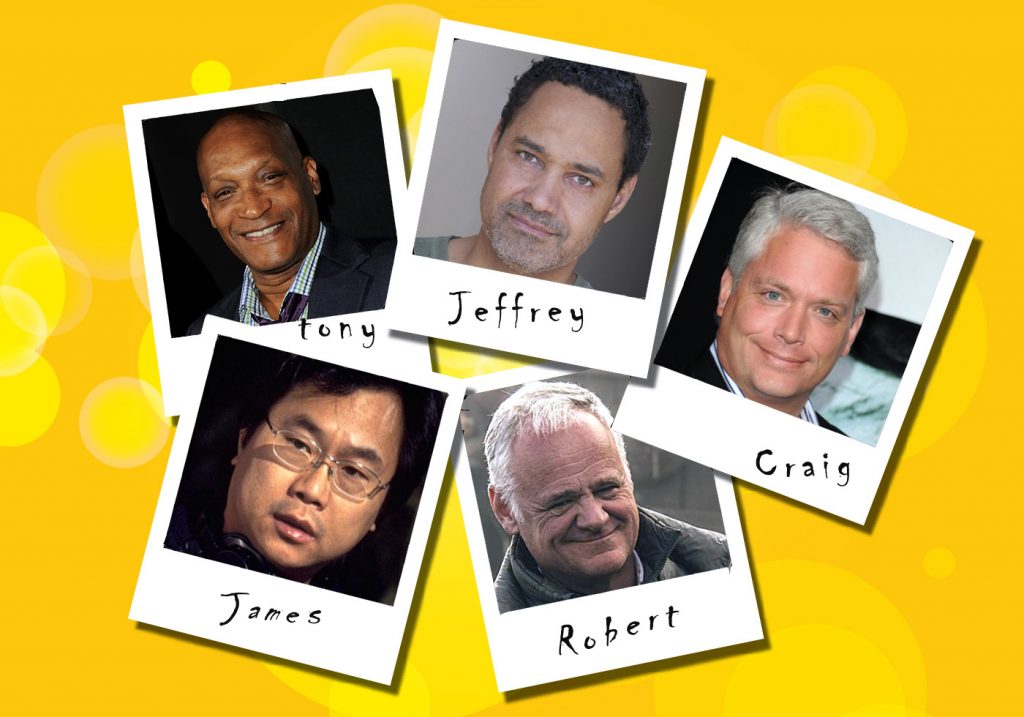
Of course, there is life beyond Final Destination for all five of these extremely talented men. Tony Todd is an actor who never goes out of style, and he’s got six films slated for release this year (including the much-anticipated Candyman remake). Robert McLachlan shot six episodes of the upcoming Lovecraft Country television series, which is based on the genre-bending novel by Matt Ruff. James Wong is hard at work on American Horror Story. Craig Perry has two features in pre-production. Jeffrey Reddick wrote and directed a feature version of his horror short, Good Samaritan, which is now in post-production.

